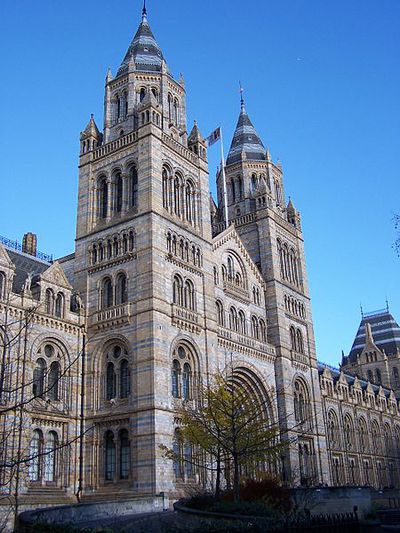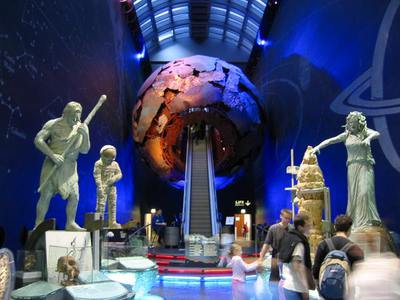
Collections of the Natural History Museum
London’s Natural History Museum is one of the most famous museums of natural history in the world and houses one of the largest collections of life and earth science objects and specimens. The five main collections - mineralogy, botany, palaeontology, zoology and entomology – consist of an estimated 70 million pieces. Many items don’t only have a major scientific value but historical as well, for example specimens from the renowned English naturalist and geologists Charles Darwin.
In addition to its impressive natural history collections, the Museum is also famous for its identification, taxanomy and conservation research centre.
Collections of the Natural History Museum are displayed in four “coloured” galleries or zones:
-
Blue Zone. Galleries in the so-called Blue Zone are dedicated to biodiversity of life on our planet. Visitors can explore and experience a gallery dedicated to mammals - both living and extinct species, and galleries which present the diversity of fish, amphibians, reptiles, human biology, dinosaurs, marine invertebrates and nature-inspired artworks.
-
Green Zone. It encompasses the grand central hall featuring the famous Diplodocus skeleton (Dippy), a gallery called the Treasures which displays some of the most outstanding specimens and objects from the Museum’s collection, and galleries which are dedicated to fossil marine reptiles, fossils that were found in Britain, birds, human evolution, arthropods, minerals and ecology.

-
Red Zone. In Red Zone galleries, visitors can learn more about the evolution of life before humans, the forces that continue to shape the planet to the present day, what’s going on beneath the Earth’s surface, the impact of human activity on the environment and admire more fossils, minerals, gemstone and other life and earth science objects.
-
Orange Zone. This Zone consists of the Wildlife Garden which in turn is home to thousands of native plant and animal species and the newly built 8-storey Darwin Centre. The latter was designed to provide work space to the museum’s researchers and scientists as well as to host various displays and interactive exhibitions.
In addition to permanent exhibitions of its own collections, the Natural History Museum also regularly hosts temporary exhibitions and various events. Just like other publicly funded museums in the UK, entry to the Natural History Museum is free of charge, however, keep in mind that temporary exhibitions usually have an entry fee.